
Classic Beauties at Wooden Boat Show
Corinthian Yacht Club in Tiburon spent Summer Sailstice weekend hosting the Master Mariners Benevolent Association, including the 26th Wooden Boat Show on sunny, warm Sunday.
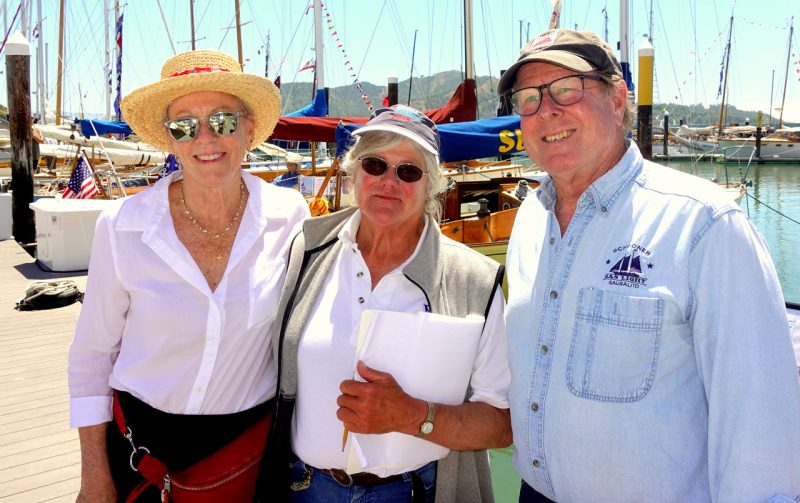
The boats that stood out for our Roving Reporter, Woody, included the stunning Alden schooner Mayan. “The boat looks absolutely beautiful, even better than the first time she appeared at the show a few years ago.”

“A close second would have been Yucca, whose new owner is keeping the boat in beautiful shape after buying it from Hank Easom.”

“A few runners-up would have been the yellow Sunda and Freda B, which is not an old woodie. But considering how much the boat sails, day in and day out, year-round, sometimes two to three charters a day, and how hard it would be to maintain a boat like that, Freda B was absolutely sparkling throughout. It takes a lot of effort to maintain any Master Mariner classic boat in such Bristol condition, but most of them are not sailed regularly throughout the year. Freda B’s condition, especially for a working boat, is the standard by which other similar boats are measured.
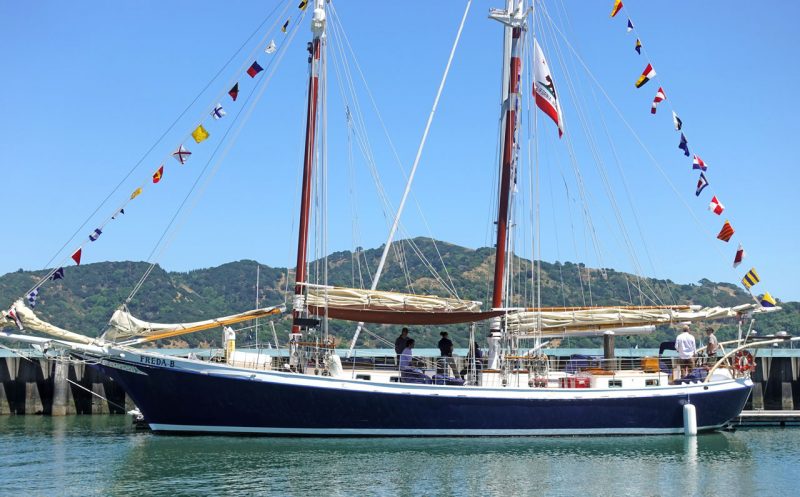

“Peter English told me there were 37 boats in the show this year. That’s down a bit, especially for small boats. Conspicuous in her absence was the schooner Brigadoon, but Peter explained that Terry Claus had a once-in-decade family reunion in the Midwest that he had to attend. But it was great to see some of the regular woodies, and it was a beautiful day for a show.”

Show awards went to:
- The Alma Trophy for the “Biggest change in one year” went to Catnip.
- The Corinthian Cup “Reflects on care of owner” went to Gold Star.
- The winner of Best in Show was Tre.
- People’s Choice (119 votes) went to Water Witch.


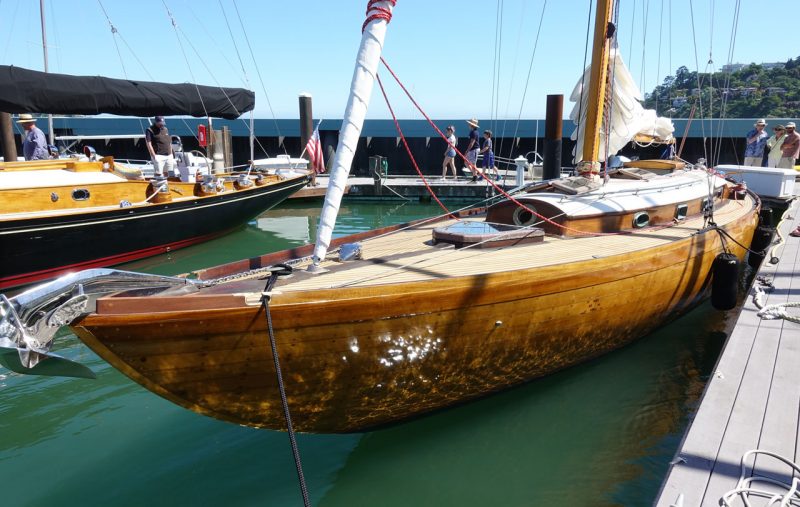

Nominations Open for Sailors of the Year
World Sailing invites you to nominate individuals, teams and organizations for the 2019 World Sailing Awards. The awards “celebrate outstanding achievement and exceptional contributions to the sport of sailing,” writes Daniel Smith, World Sailing’s director of communications.
Rolex World Sailor of the Year
Anyone can nominate male and female sailors in any discipline of the sport. Click here to nominate a sailor for 2019 Rolex World Sailor of the Year.
The sailors you nominate should have performed an “outstanding achievement in the sport of sailing between September 1, 2018, and August 31, 2019.” Nominations close at 17:00 UTC on August 31. World Sailing will draw up a shortlist, with the most inspirational achievers becoming the 2019 Rolex World Sailor of the Year Nominees.
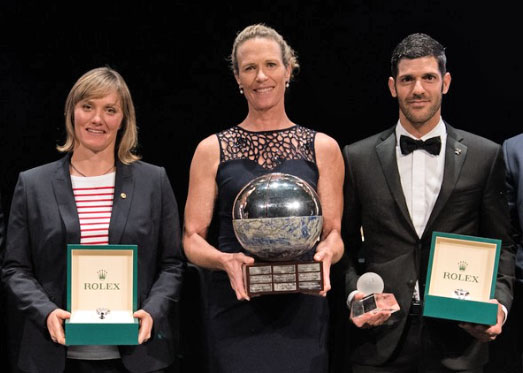
World Sailing 11th Hour Racing Sustainability Award
The World Sailing 11th Hour Racing Sustainability Award “celebrates the effective execution or ongoing delivery of high-impact, highly replicable sustainability initiatives, aligned to World Sailing’s Sustainability Agenda 2030.” Corpus Christi Yacht Club in Texas won the inaugural award following the successful 2018 Youth Sailing World Championships. The Youth Worlds was the “first World Sailing Championship with a focus on ocean conservation and sustainability.” The 2019 winner will receive a $10,000 USD prize to support their sustainability initiatives and a perpetual trophy made from recycled carbon fiber from an America’s Cup boat.
Click here for the World Sailing 11th Hour Racing Sustainability Award Nomination Form. Nominations will close at 17:00 UTC on August 23.
World Sailing Hempel Team of the Year Award
The Hempel Team of the Year Award will be presented to a crew of two or more sailors from any category of sailing. This award will “celebrate teams who personify the sporting values of integrity, ambition, resilience and resourcefulness.” In 2018, the inaugural award went to Dongfeng Race Team for their success in the 2017-18 Volvo Ocean Race.
Click here for the World Sailing Hempel Team of the Year Award nomination form. The nomination period will close at 17:00 UTC on August 12.
World Sailing Boat of the Year Award
The Boat of the Year Award will “celebrate outstanding boat design, innovative concepts and ground-breaking technological advancements that are changing the face of sailing, pioneering change across the world.” It will be presented to a racing sailboat that has been scored in an international race for the first time between September 1, 2018, and August 12, 2019. Niklas Zennstrom’s Fast 40 Ran VII received the Boat of the Year Award in 2018.
Click here for the Boat of the Year Award nomination form. The nomination period will close at 17:00 UTC on August 12.
Selection committees will draw up shortlists in each category by early September. Nominees will be announced on sailing.org. The awards will be presented at the World Sailing Annual Conference in Bermuda on Tuesday, October 29.
AeroPress: The Better Coffee Press
When West Meets East, Part 1
The breeze was around 10 to 15 knots as I stared at the water from the ferry. There was a hint of whitecaps across water that had, to my eyes, an unusually deep and radiant quality of blue. Behind us, the coast had an unusually deep and radiant quality of green, with two mountains — the Camden Hills — pushing up from the omni-foliage. Everyone was quick to grouse that it had been an aggravatingly wet, cold spring, with the sole benefit being the exceptional greenness.
The ferry plowed across the breeze, taking the wind and a small, lazy swell on the beam; cars on deck floated up and down on their suspensions. We were headed toward dozens of small, flat, pine-capped islands.

The entire scene felt . . . what was it . . . exactly? Charming? Certainly. Bucolic? Yes, but I hate that word; it sounds like an unpleasant digestive condition. What it really felt like — taking the ferry from Rockland to Vinalhaven, Maine — was inviting. The sea, the coast, and the islands were begging to be sailed.
Latitude readers may or may not know that we, a venerable West Coast magazine, have deep East Coast roots, especially in Maine. But for me, Vinalhaven was new territory. Visiting family over the next few days, I would see a few sailboats heeled over on East Penobscot Bay, but wouldn’t do any sailing myself, though I felt that strange sense, again, that the East Coast is somehow set up for and caters to all things boats and sailing. As we continue to discuss the Bay Area’s evolving waterfront, we find ourselves constantly comparing and contrasting San Francisco’s boaty-ness to that of all other coasts. Even though it’s rapidly gentrifying and becoming more expensive, New England still seems to out-boaty everyone.
As we approached the first of Vinalhaven’s seemingly infinite splattering of islands, we motored in a long, sweeping arch through a roughly defined channel thick with lobster traps and their brightly painted buoys. When surfers look at empty waves reeling off in front of them, they call it ‘mind-surfing’; I found myself ‘mind-anchoring’ in all of the islands, some of them lined with white-sand beaches and (decidedly frigid) turquoise water.

When writing about Maine last year, I cited a 1983 article in the New York Times titled Sailing the Coast of Maine. A 36-year-old article might seem a bit dusty on the subject, but perhaps it’s fitting — Maine has a frozen-in-time quality. Times writer Susan Butler described passages between Isle au Haut to Stonington on Deer Isle, both of which lie to the east of Vinalhaven. “There are so many islands — over 20 — so close together that it is a little bit like threading your way through a maze. [The islands] offer good anchorages, occasionally granite ledges, occasionally sandy beaches (Maine version — small pebbles) and spruce-ringed coves. The musseling is excellent.”
The ferry made a final turn into Carvers Harbor, which was swollen with lobster boats on moorings. It was a perfect introduction to the island. The vibe on Vinalhaven, I would find, was not unlike that of other islands I’d visited in the world, where things move a bit slower. Everyone waves and says hello, and the main attraction is the place itself and its perch in the sea. I’m not sure how locals would take to having Vinalhaven described as “moving slow,” as the vibe was also working class. There was some tourism here and there, sure, with the occasional shop selling all manner of lobster-themed and patterned kitsch. (It was still early in the season, before the masses truly descended.) But these were the exception, here, and not the rule as in Southern Maine, where tourism and tourists reign supreme.

I would quickly find that my favorite thing about even the idea of cruising in Maine was its countless islands and their proximity to each other. This idea of tiny-island-hopping channeled some childhood, Adventures of Tom Sawyer urge.
My family, who had been living on Vinalhaven for a few years, bought a converted lobster boat last year for cruising. Why not a sailboat? My cousin and her partner are a cook and carpenter respectively, and said they simply don’t have the time to go slowly from place to place — especially in the summer, when opportunities to make money are at their peak.
There were no sailboats in Carvers Harbor. They were spread out to other parts of the island, especially between Vinalhaven and North Haven, another inkblot of an island immediately to the north. Vinalhave and North Haven are separated by the Fox Island Thorofare, which was just a few hundred yards of water separating rock and tree from rock and tree. A friend and I took ‘the ferry’ over — just a 14-ft Boston Whaler.
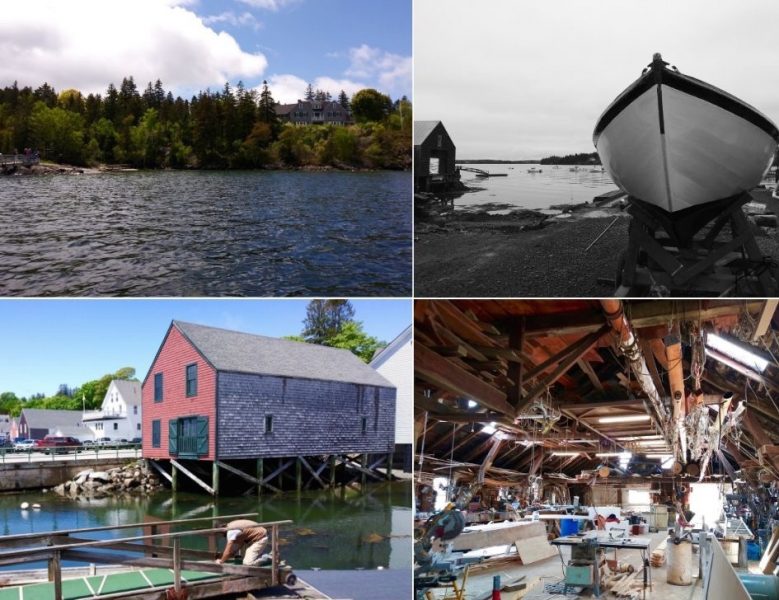
To pay our $7-a-person round-trip fare, we wove our way through Brown’s Boatyard and into the chandlery, an old building with uneven floors that smelled of sawdust and maritime goodness. I felt that strange thing again, like I’d stumbled into a boaty paradise where everyone was a sailor. I’m not sure my observations were rooted in anything more than the relative awe of being in a new place (and on vacation!), but I suspended my critical thinking and soaked in the maritime-ness on tap.

Are you a West Coaster who’s spent some time on the East Side (or vice versa)? Do you find the “boaty-ness” of each coast to be dramatically different, or relatively the same, in terms of places to cruise and anchor, infrastructure for cruisers, etc?
Please comment below, or write us here.


